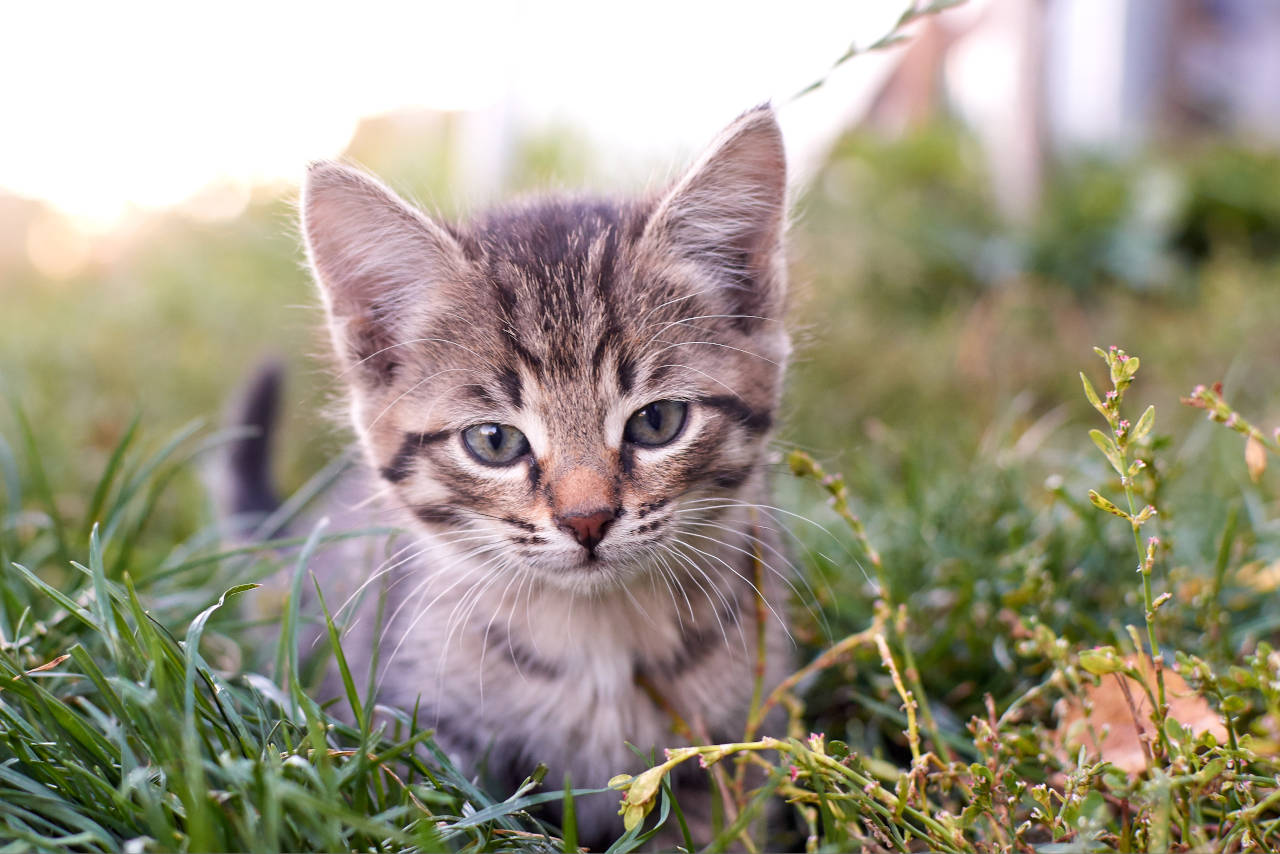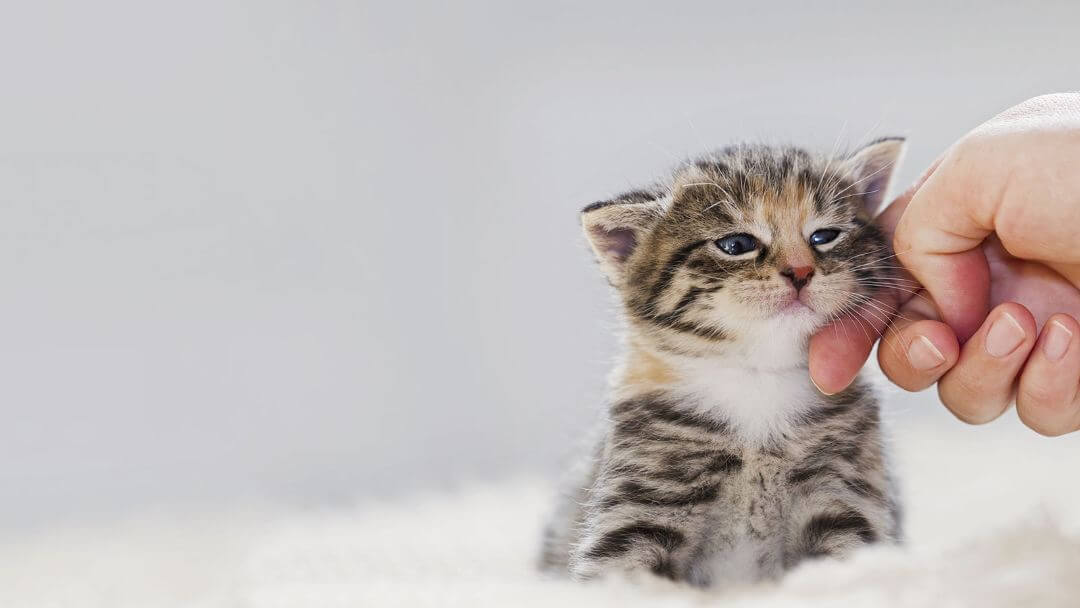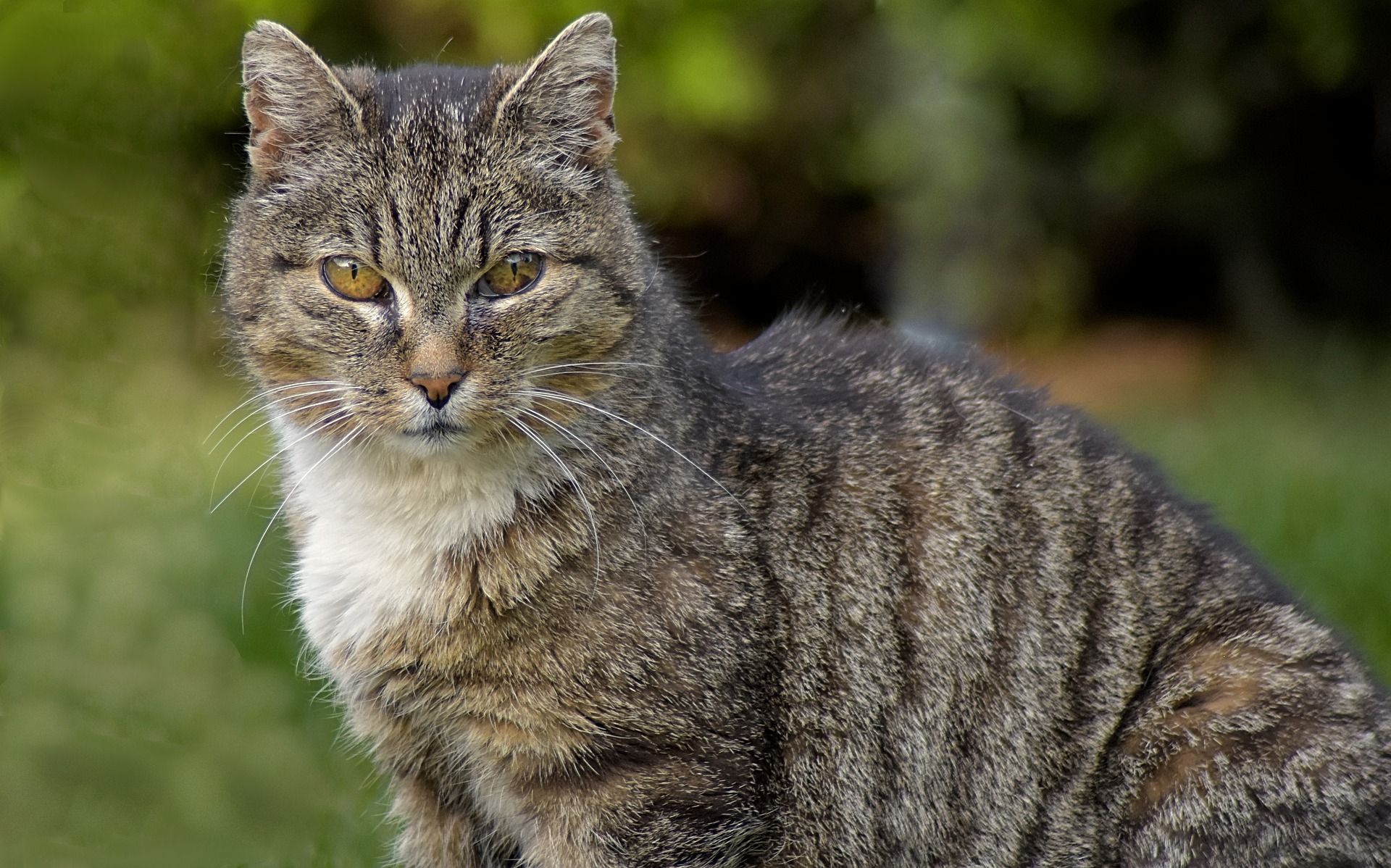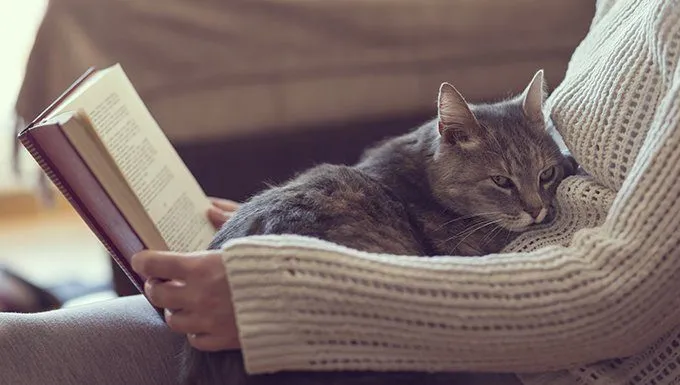Cat Year vs Human Year
Feline Aging Process

Felines are known for their unique aging process, which differs from that of humans. Unlike humans, who age at a relatively consistent rate, cats age at an accelerated pace during the first two years of life, followed by a slower rate after that.
The term “cat years” is often used to describe the equivalent human age in cats. While it’s not a direct correlation, it helps understand how quickly cats develop physically and mentally as they mature.
Here’s a rough estimate of cat years based on their age:
Newborn kittens: 1-4 weeks – equivalent to human infancy (0-1 year)
Kittens (4-12 weeks): equivalent to human toddlerhood (1-2 years)
Adolescent cats (3-6 months): equivalent to human adolescence (13-19 years)
Young adult cats (1-2 years): equivalent to human early adulthood (20-30 years)
Cats typically reach their prime between 1-5 years of age, when they are physically and mentally at their best. After this period, their aging process slows down, but it’s still essential to monitor their health.
The average lifespan of a domestic cat is around 12-15 years, depending on factors such as breed, diet, lifestyle, and genetics. Some indoor cats have been known to live up to 20 years or more with proper care and attention.
Factors that can affect a cat’s lifespan include:
Diet: A balanced diet is crucial for maintaining overall health
Lifestyle: Indoor cats generally live longer than outdoor cats due to reduced exposure to diseases and accidents
Genetics: Some breeds are prone to certain health issues that can affect their lifespan
Cats’ aging process is also influenced by factors such as:
Health conditions: Chronic health issues can reduce a cat’s quality of life and lifespan
Dental care: Regular dental check-ups are essential to prevent oral health issues that can affect overall health
Vaccinations: Regular vaccinations help protect against diseases that can shorten a cat’s lifespan
It’s essential for cat owners to work closely with their veterinarian to monitor their cat’s health and implement preventative measures to ensure they live a long, happy, and healthy life.
How Long Do Cats Live?
Factors Affecting Feline Lifespan
Natural Causes of Death in Senior Cats

Cats age at different rates compared to humans, which makes determining their life expectancy challenging. One common method used is cat years, also known as human years plus one for every year the cat has lived.
For example, a 1-year-old cat would be considered equivalent to a 15-16 human years in terms of development and physical maturity. This means that cats tend to age faster than humans during their first two years of life.
A 2-year-old cat is comparable to an 24-25 human year in terms of overall health, energy levels, and physical appearance. As cats get older, they experience similar aging processes as humans, including decreased muscle mass, joint stiffness, and cognitive decline.
Cat years are a way of estimating a cat’s age based on their development, physical maturity, and life expectancy. However, it is essential to note that individual differences play a significant role in determining how long cats live. Some cats may experience chronic health issues or suffer from diseases such as kidney disease or diabetes, which can affect their life expectancy.
The average lifespan of an indoor domestic cat is between 12-17 years, depending on various factors like breed, nutrition, environment, and genetics. However, some cats have been known to live up to 20 years or more in optimal conditions.
Factors influencing the longevity of senior cats include regular veterinary check-ups, a balanced diet, adequate exercise, mental stimulation, and proper care for age-related health issues such as dental problems and obesity.
In conclusion, while cat years provide an estimate of a cat’s life expectancy, individual differences and factors like breed, nutrition, environment, and genetics play a significant role in determining how long cats live. By understanding these variables and providing proper care for our feline companions, we can help ensure they lead happy and healthy lives throughout their golden years.
Senior cats typically exhibit physical changes such as graying around the muzzle, reduced muscle mass, joint stiffness, and a slower metabolism. Age-related health issues such as kidney disease, diabetes, and dental problems may also become more pronounced during this stage.
Cats can live up to 20 years or more in optimal conditions, but individual differences play a significant role in determining their lifespan. Factors such as genetics, nutrition, environment, and access to veterinary care can all impact an individual cat’s life expectancy.
Cat Life Stages
Kittenhood (0-1 year)
Cats go through several stages of development as they mature, with kittenhood being the first and most critical phase.
The kittenhood stage, which lasts from birth to one year of age, is a period of rapid growth and development, both physically and mentally.
During this time, kittens learn essential skills such as hunting, socialization, and communication with their human caregivers.
Kittenhood can be divided into several sub-stages: neonatal (0-2 weeks), transitional (2-4 weeks), and socialization (4-14 weeks).
During the neonatal stage, kittens are completely dependent on their mother’s milk and care, learning to walk, see, and hear.
By 4 weeks of age, kittens transition to a more mobile and active phase, where they begin to venture out of the nest and interact with littermates and other animals.
The socialization stage, which lasts from 4-14 weeks, is crucial for kittens to learn essential skills such as fear reduction, confidence building, and social bonding.
Cats typically reach physical maturity at around one year of age, but their cognitive development continues until they are about two years old.
This prolonged period of kittenhood allows cats to develop into skilled hunters and adapt to various environments and situations.
According to the American Association of Feline Practitioners (AAFP), a cat’s lifespan can range from 12-17 years, depending on factors such as breed, lifestyle, nutrition, and health conditions.
The average indoor cat may live up to 15-20 years or more with proper care and attention to their health needs.
However, outdoor cats face numerous risks such as traffic accidents, diseases, and predation, which can significantly reduce their lifespan.
Cats are considered seniors at around age seven, with physical changes such as graying fur, weight gain, or decreased mobility becoming more apparent as they enter this stage of life.
Adolescence (1-2 years)
The term “cat year” is a concept used to estimate the equivalent age of a human in terms of cat development and aging, typically based on a cat’s physical and behavioral changes. For kittens between 1-2 years old, their growth rate and development are often comparable to those of children around 5-7 years old.
The cat year concept is not an exact science, but rather a general guideline that considers various factors such as breed, size, genetics, diet, and lifestyle. Generally speaking, the first two years of a cat’s life are considered critical for their growth and development. During this period, kittens experience rapid physical and neurological changes.
Kittens reach certain milestones at different stages: at about 6-8 months old, they often double their birth weight; by 9-12 months, most cats have achieved about 75% of their adult size; and between 1-2 years, many cats reach approximately 90% of their adult size.
When considering a cat’s equivalent human age in terms of lifespan, the American Association of Feline Practitioners suggests that a domesticated cat’s average lifespan is about 12.5 to 17 years, with some living up to 20-25 years or more in certain circumstances. Factors contributing to these variations include diet quality, regular veterinary care, lifestyle choices, and genetics.
While there’s no definitive rule for converting cat years directly into human years, a general estimate might look like this: 1-2 years for kittens is similar to a child around 5-7 years old in terms of physical growth, while the adult years (3-10) would approximate a human equivalent of about 30-50 years. However, this is an oversimplification and doesn’t accurately account for individual variations in feline aging.
Understanding cat age conversion can help owners anticipate potential health changes and developmental milestones as their pet matures. Nonetheless, it’s crucial to remember that these estimates are approximate and may not accurately reflect a particular cat’s life stage or lifespan based on its breed, genetics, lifestyle, and environment.
Adulthood (2-7 years)
Seniorhood (8+ years)
Cats are known to live longer than dogs due to their low-maintenance lifestyle, genetics, and access to quality veterinary care.
Seniorhood for cats is typically defined as the stage of life after 7-10 years of age, with some sources using the term “geriatric” to describe cats over 12-15 years old.
Cat years are not an exact equivalent of human years, but rather a way to estimate a cat’s age in terms of its physical and mental development compared to humans.
One way to determine a cat’s age is by considering the average lifespan of a domestic cat breed. Indoor cats often live longer than their outdoor counterparts due to reduced exposure to disease and environmental hazards.
The average indoor cat lives for around 12-15 years, while outdoor cats typically have shorter lifespans ranging from 5-10 years.
Seniorhood in cats can be divided into several stages based on age:
– Early seniorhood (7-9 years): Cats may start to experience weight gain or loss, dental issues, and a slight decline in energy levels at this stage.
– Middle-aged seniorhood (10-12 years): Cats may begin to experience more pronounced signs of aging, such as increased stiffness, graying fur, and vision impairment.
– Late seniorhood (13+ years): Cats are considered geriatric and may exhibit significant physical and mental decline, including weight loss, dental disease, and cognitive impairments.
Factors that can influence a cat’s lifespan include diet, lifestyle, genetics, and access to veterinary care. Indoor cats with high-quality food, regular check-ups, and preventative care tend to live longer than their outdoor counterparts.
While these general guidelines provide insight into seniorhood in cats, individual factors must be considered when determining the age and health of a specific cat.
Cats are unique animals that continue to defy expectations regarding longevity due to advances in veterinary care and improvements in our understanding of feline biology and behavior.
Cat Life Expectancy by Breed
Short-Lived Breeds (average lifespan: 5-10 years)
Medium-Lived Breeds (average lifespan: 10-15 years)
 Cats age differently than humans, and their lifespan is often measured in cat years rather than human years. This means that a 10-year-old cat is equivalent to an 80-90 year old person in terms of physical and mental development.
Cats age differently than humans, and their lifespan is often measured in cat years rather than human years. This means that a 10-year-old cat is equivalent to an 80-90 year old person in terms of physical and mental development.
Middle-aged breeds, which live for 10-15 years, are considered to be at the peak of their health and vitality during this period. Their average lifespan can vary depending on factors such as genetics, diet, lifestyle, and access to veterinary care.
Cat years take into account the rapid growth and development that occurs in kittens from birth to adulthood, which is why cats age more quickly than humans. For example, a one-year-old cat has already completed 15-18 times the amount of physical and mental growth of an average human child in their first year.
The American Association of Feline Practitioners recommends that owners consider their cat’s life stage when planning care, which includes regular check-ups with a veterinarian every 6 months until age 7, followed by annual visits until age 14. Middle-aged cats are more prone to chronic health issues such as kidney disease and diabetes.
Genetics also play a significant role in determining the lifespan of middle-aged breeds. Some cats are bred specifically for their longevity, while others may be more prone to certain health conditions. A balanced diet that is tailored to meet the nutritional needs of older cats can also help support overall health and vitality.
Middle-aged cat owners should monitor their pet’s weight, as obesity can contribute to a range of health issues in felines, including diabetes, arthritis, and heart disease. Regular grooming and exercise are essential for maintaining physical mobility and mental stimulation throughout life.
Long-Lived Breeds (average lifespan: 15+ years)
Cats are known for their remarkable longevity, with some breeds living up to 20 years or more. The concept of “cat years” is often used to estimate a cat’s age in human years, but it can be misleading.
The average lifespan of a domestic cat is around 12-15 years, depending on factors such as genetics, diet, lifestyle, and health conditions. Some breeds, however, are known for their exceptional longevity and can live up to 20 years or more.
Long-lived breeds, also known as senior cat breeds, typically have a longer average lifespan than other breeds. These breeds often exhibit characteristics that promote longevity, such as slower aging rates, reduced susceptibility to disease, and lower genetic variation.
Some examples of long-lived cat breeds include:
Ragdoll: Known for their gentle nature and soft coat, Ragdolls are a popular breed with an average lifespan of 12-17 years.
Balinese: This sleek and agile breed is known for its striking appearance and can live up to 15-20 years or more.
Oriental Shorthair: With their short, silky coats and playful personalities, Oriental Shorthairs are a long-lived breed with an average lifespan of 12-17 years.
Siamese: This intelligent and outgoing breed is known for its striking blue eyes and can live up to 15-20 years or more.
While cat years are not always an exact science, they do provide a rough estimate of a cat’s age in human years. The American Association of Feline Practitioners (AAFP) recommends the following aging guidelines for cats:
Kittenhood: 0-2 years
Adolescence: 2-4 years
Young adulthood: 5-10 years
Maturity: 11-14 years
Seniorhood: 15+ years
It’s essential to remember that individual cats can vary significantly in terms of their aging rate and lifespan, regardless of breed. Regular veterinary check-ups and proper care can help promote your cat’s overall health and longevity.
In conclusion, long-lived breeds such as Ragdolls, Balinese, Oriental Shorthairs, and Siamese are known for their exceptional longevity, with some living up to 20 years or more. While cat years provide a rough estimate of a cat’s age in human years, it’s essential to remember that individual cats can vary significantly in terms of their aging rate and lifespan.
Caring for Senior Cats
Nutrition and Hydration in Older Cats
Cats are known to live longer than many other popular household pets, but their lifespan can vary greatly depending on several factors such as genetics, diet, lifestyle, and health conditions.
Cat years is a term used to measure the equivalent human age of a cat based on its life expectancy. On average, a domestic cat lives for around 12-15 years, but this can range from 10 to 20 years or more in some cases.
The first two years of a cat’s life are often referred to as “kittenhood.” During this period, the kitten grows and develops rapidly, both physically and mentally. After two years, the growth rate slows down significantly, but the cat continues to age.
As cats get older, their nutritional needs change. They require more protein and calories in their diet to maintain their weight and overall health. Older cats also need access to fresh water at all times to prevent dehydration, which can lead to serious health issues such as kidney disease or even organ failure.
The average cat’s lifespan is approximately 12-15 years, but some indoor cats have been known to live up to 20 years or more due to their protected lifestyle and proper care. Factors that contribute to a longer lifespan include regular veterinary check-ups, a balanced diet, plenty of rest and relaxation, and access to fresh water at all times.
When it comes to nutrition and hydration in older cats, there are several factors to consider. Older cats often experience weight loss, which can lead to a decrease in muscle mass and overall health if not addressed promptly. A balanced diet rich in protein is essential for maintaining muscle mass, as well as vitamins and minerals that support overall health.
In addition to dietary needs, older cats require access to fresh water at all times to prevent dehydration. This is particularly important during hot weather or when they have a medical condition such as kidney disease or diabetes. Providing multiple sources of fresh water throughout the day can help ensure your cat stays hydrated and healthy.
Cats that live with owners who are aware of their nutritional needs and take steps to provide them with a balanced diet and access to fresh water tend to live longer, healthier lives. This is especially true for indoor cats, which have fewer health risks than outdoor cats due to exposure to disease-carrying animals, cars, and other environmental hazards.
In conclusion, older cats require attention to their nutritional needs in order to maintain their overall health and well-being. A balanced diet rich in protein and access to fresh water at all times are essential for preventing dehydration and maintaining muscle mass. Regular veterinary check-ups, a protected lifestyle, and plenty of rest and relaxation can contribute to a longer lifespan.
Health Monitoring and Veterinary Care
Maintenance of Mobility and Flexibility
Cats have a unique aging process compared to humans. The traditional method of measuring cat age by using the same multiplication factor as for dogs has been debunked, and a more accurate system is now being used, called the “human equivalent age” or “cat years.” This system calculates the equivalent age of a human based on a cat’s life stages.
According to this system, the first two years of a cat’s life are considered equivalent to 15-20 human years due to their rapid growth and development during kittenhood. After that, each additional year is roughly equivalent to 4-5 human years, representing a slower pace of aging compared to humans.
So, using this system, we can calculate the longevity of domestic cats. On average, indoor cats can live up to 12-17 years, while outdoor or feral cats may only survive for 2-5 years due to higher risks associated with predation and disease exposure. However, some exceptional individuals have been reported to live up to 20 years in captivity.
Cats reach middle age at around 7-10 years of life, characterized by the beginning of a decline in physical condition and an increase in susceptibility to chronic diseases such as kidney failure or hyperthyroidism. At this stage, cats may exhibit changes in their behavior and habits, such as reduced activity levels or increased vocalization.
Older cats (over 10 years) may experience a range of age-related health issues, including dental problems, cataracts, arthritis, or cognitive decline. Regular veterinary care, proper nutrition, and indoor living can significantly improve their quality of life during this stage.
In terms of individual cat ages, we can estimate the lifespan based on breed-specific life expectancy, which ranges from 12-18 years for smaller breeds (such as Singapura) to 15-20 years for larger breeds (like Maine Coon). However, factors like genetics, environment, and health conditions can all impact a cat’s actual lifespan.
Ultimately, every cat is different, and their unique life stages should be monitored and managed accordingly. Regular veterinary check-ups, a balanced diet, and plenty of love and attention can help ensure your feline companion lives a long and happy life.
- Best Lusha Alternatives for 2025 - April 19, 2025
- Best Overloop Alternatives for 2025 - April 19, 2025
- Best Snov.io Alternatives for 2025 - April 18, 2025



